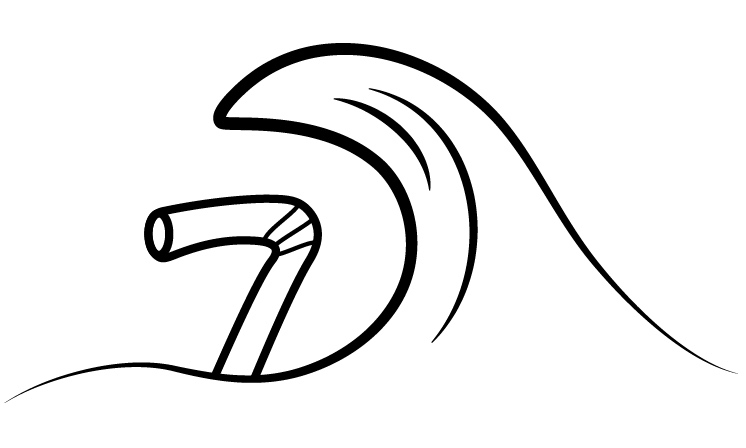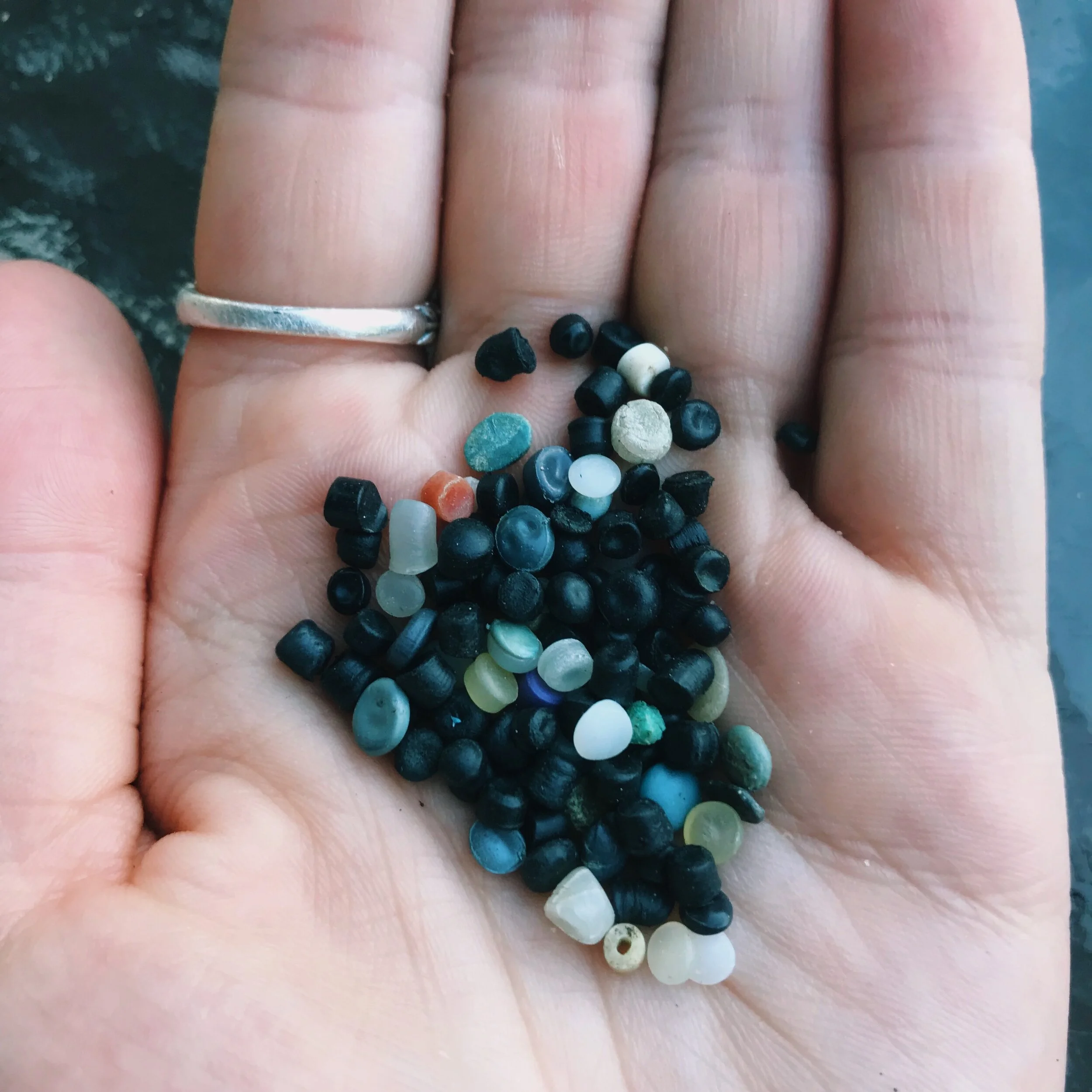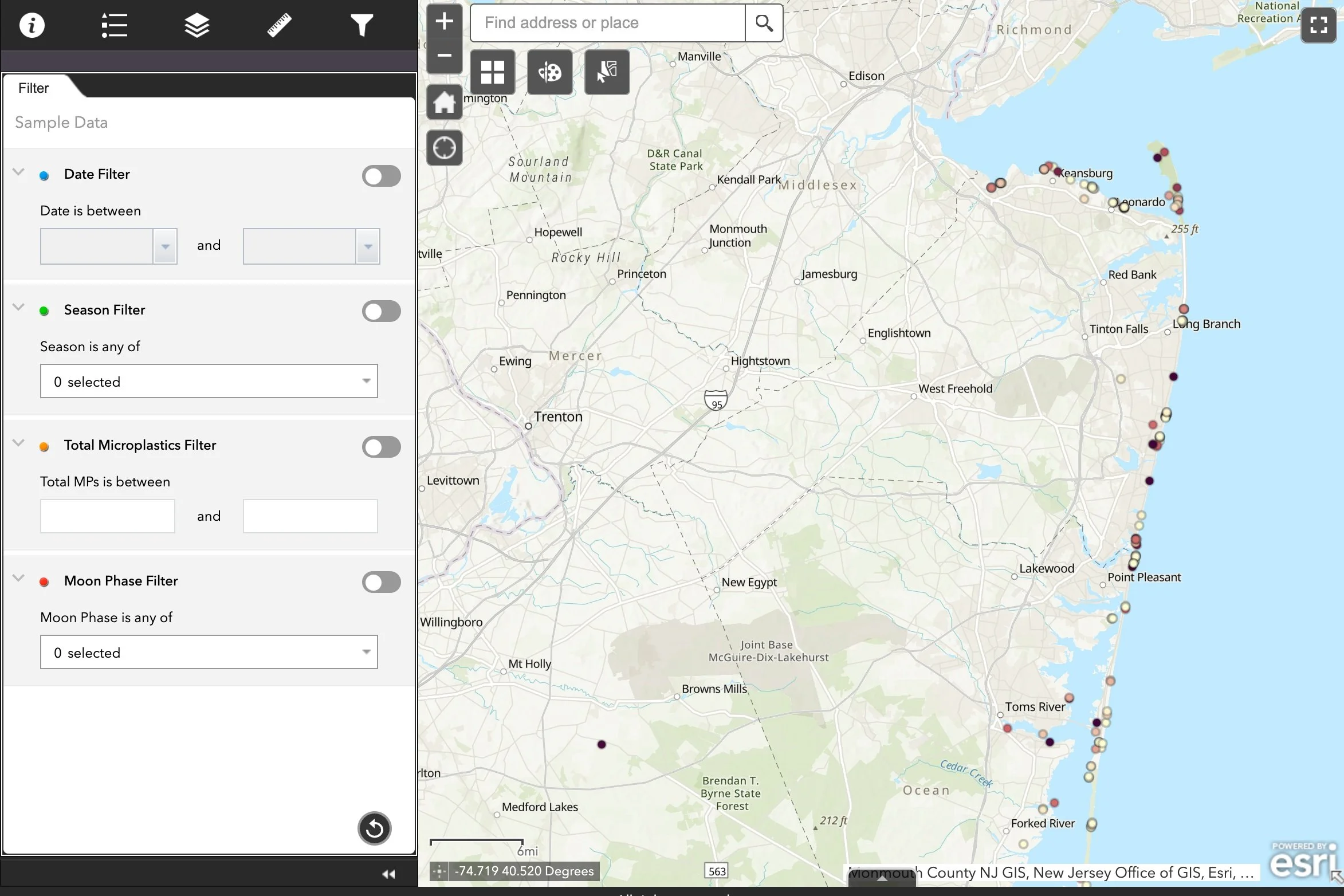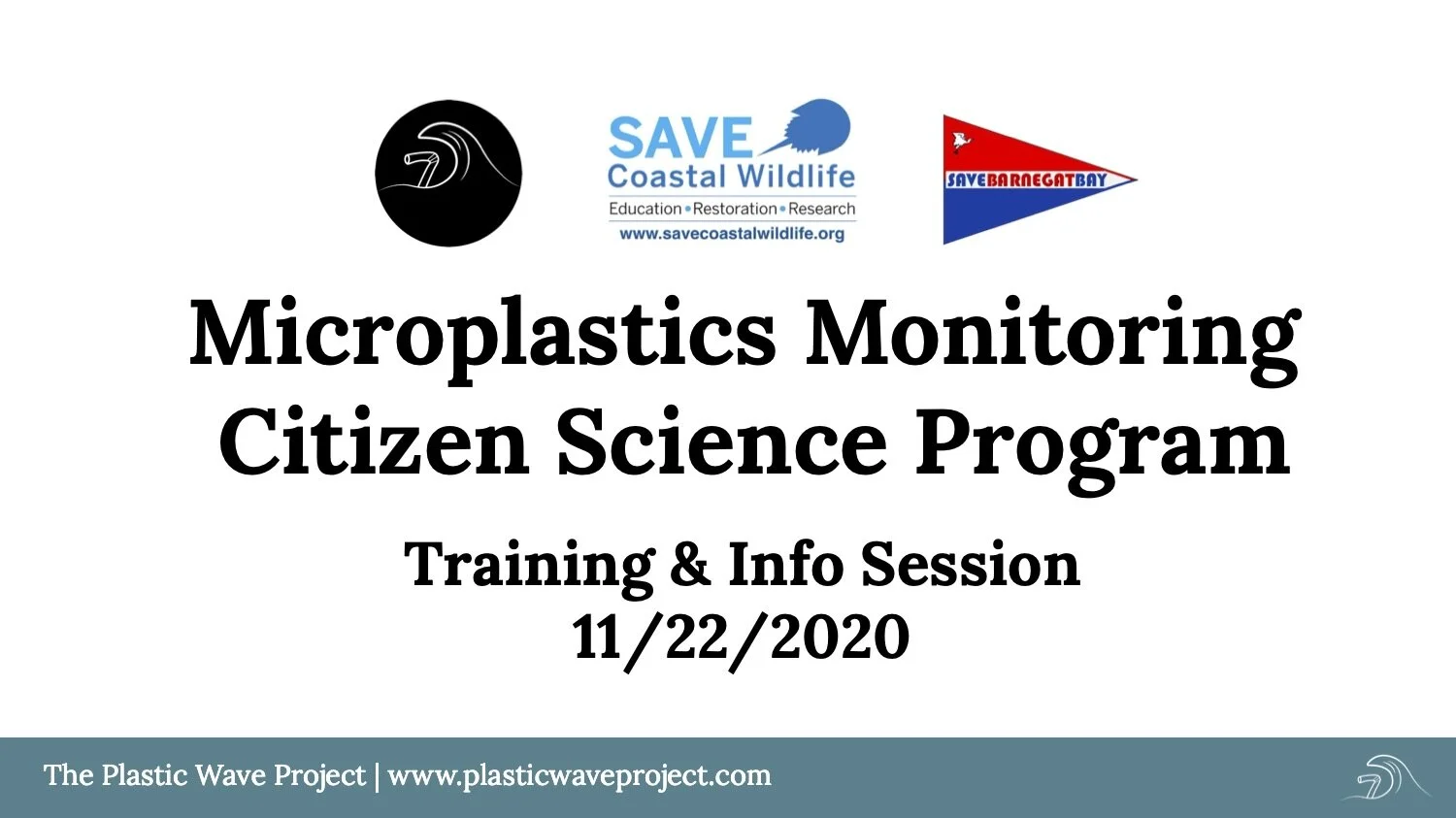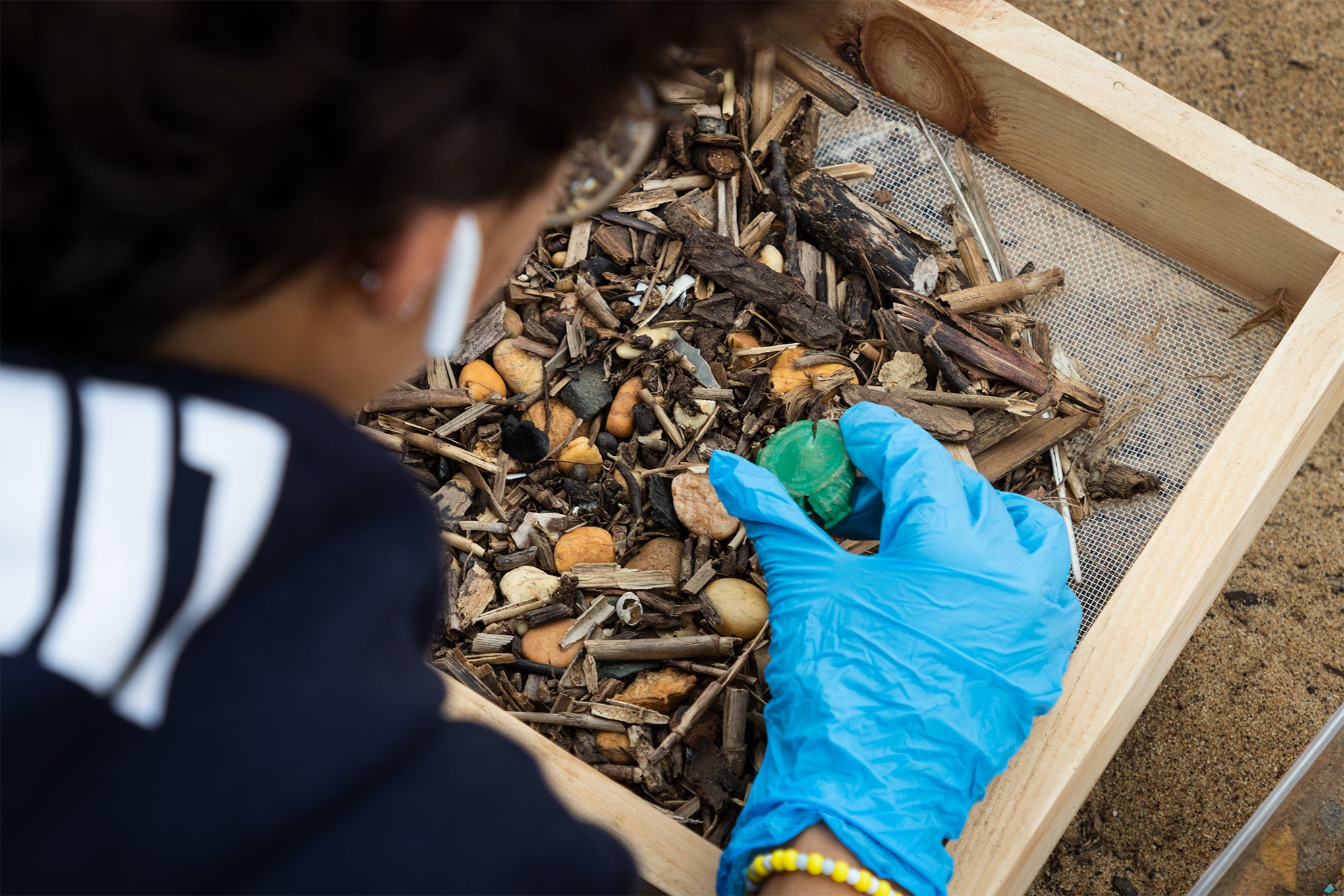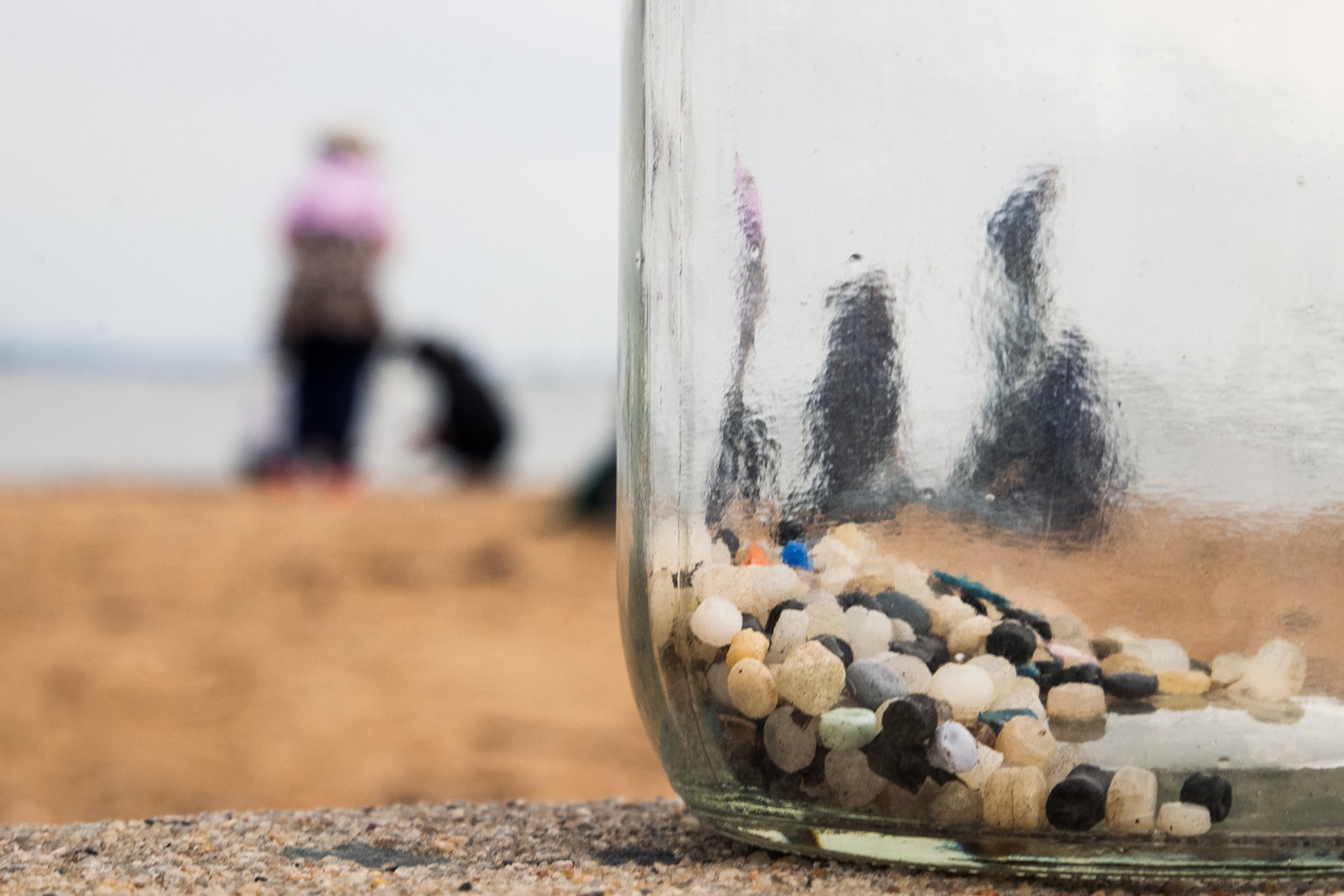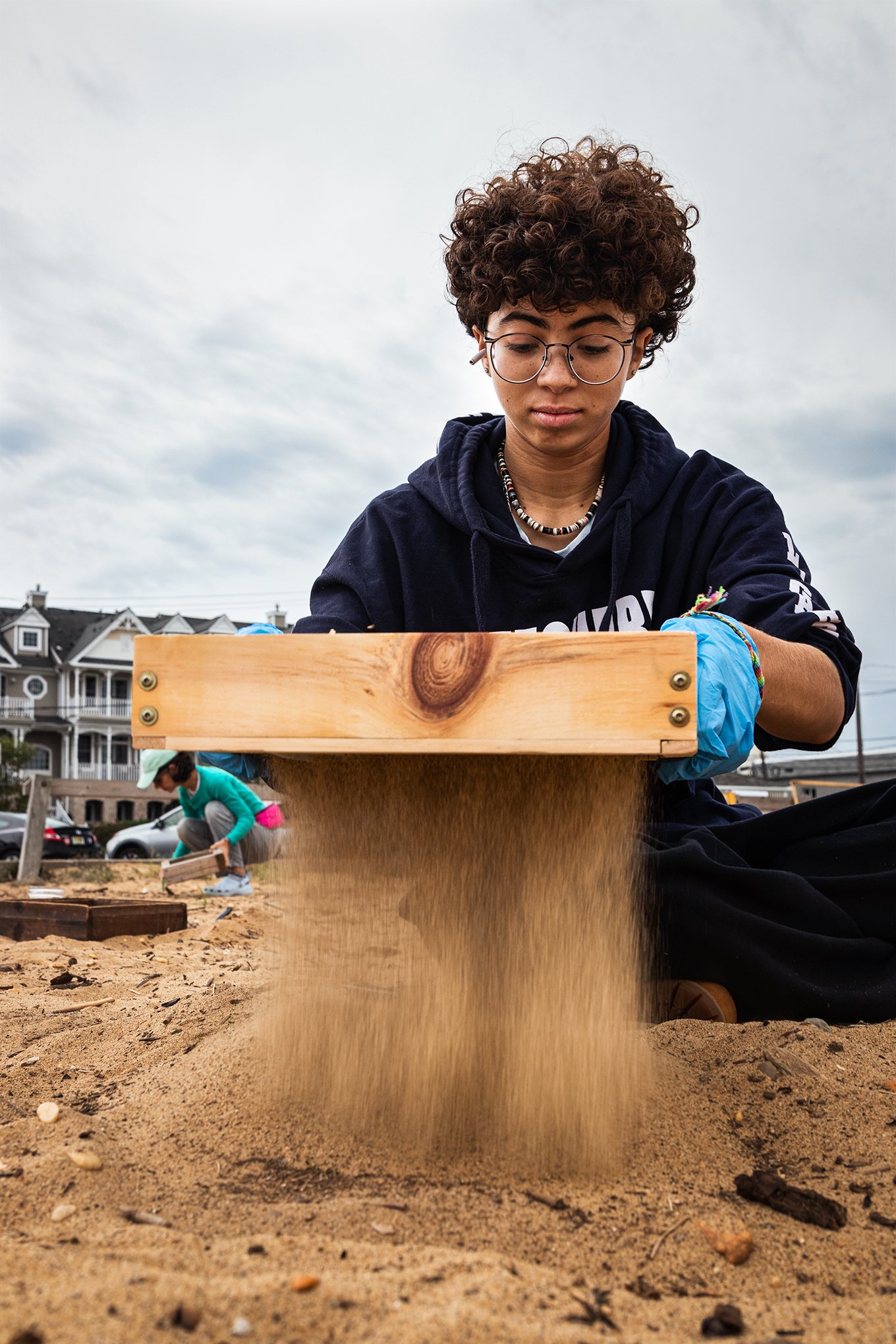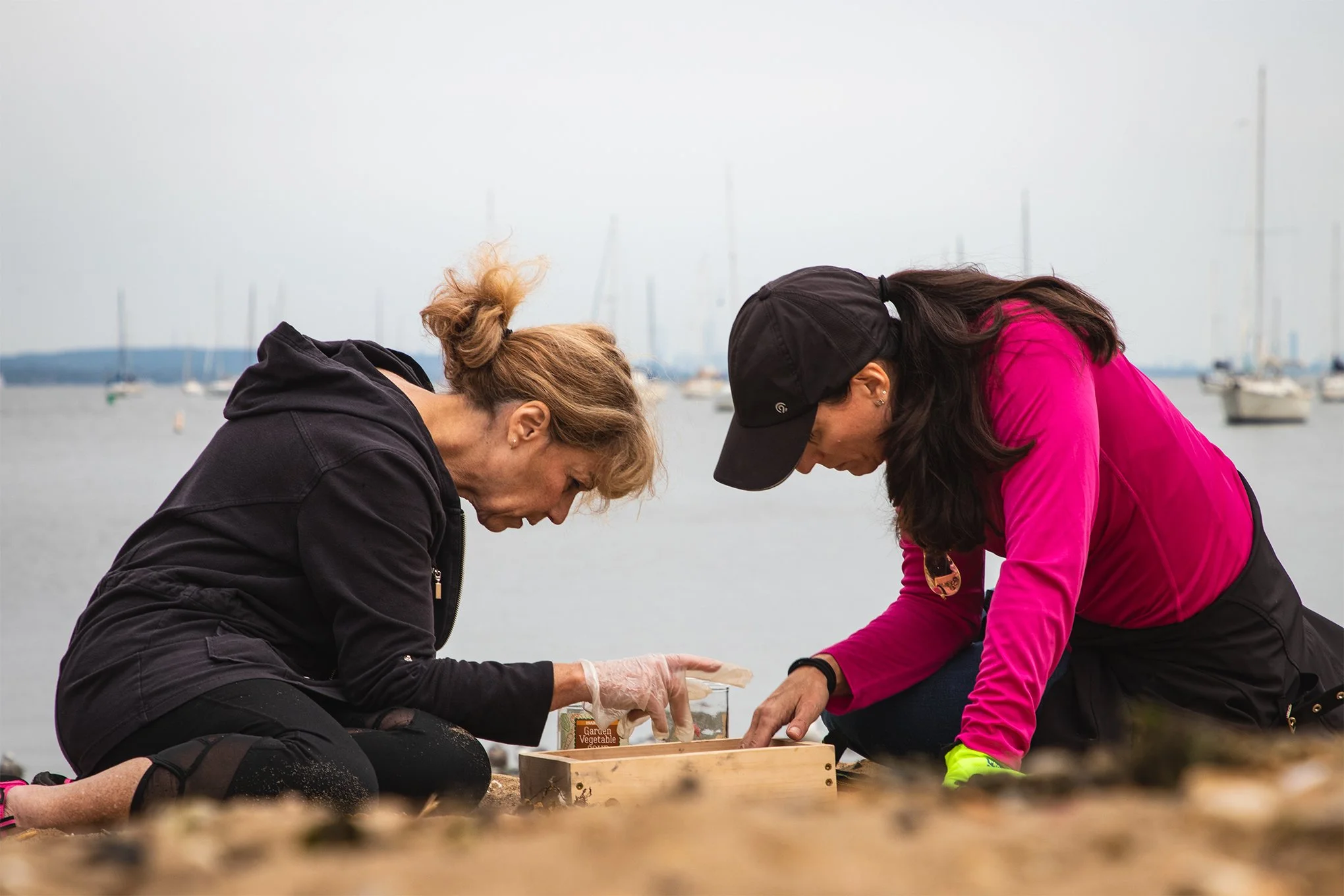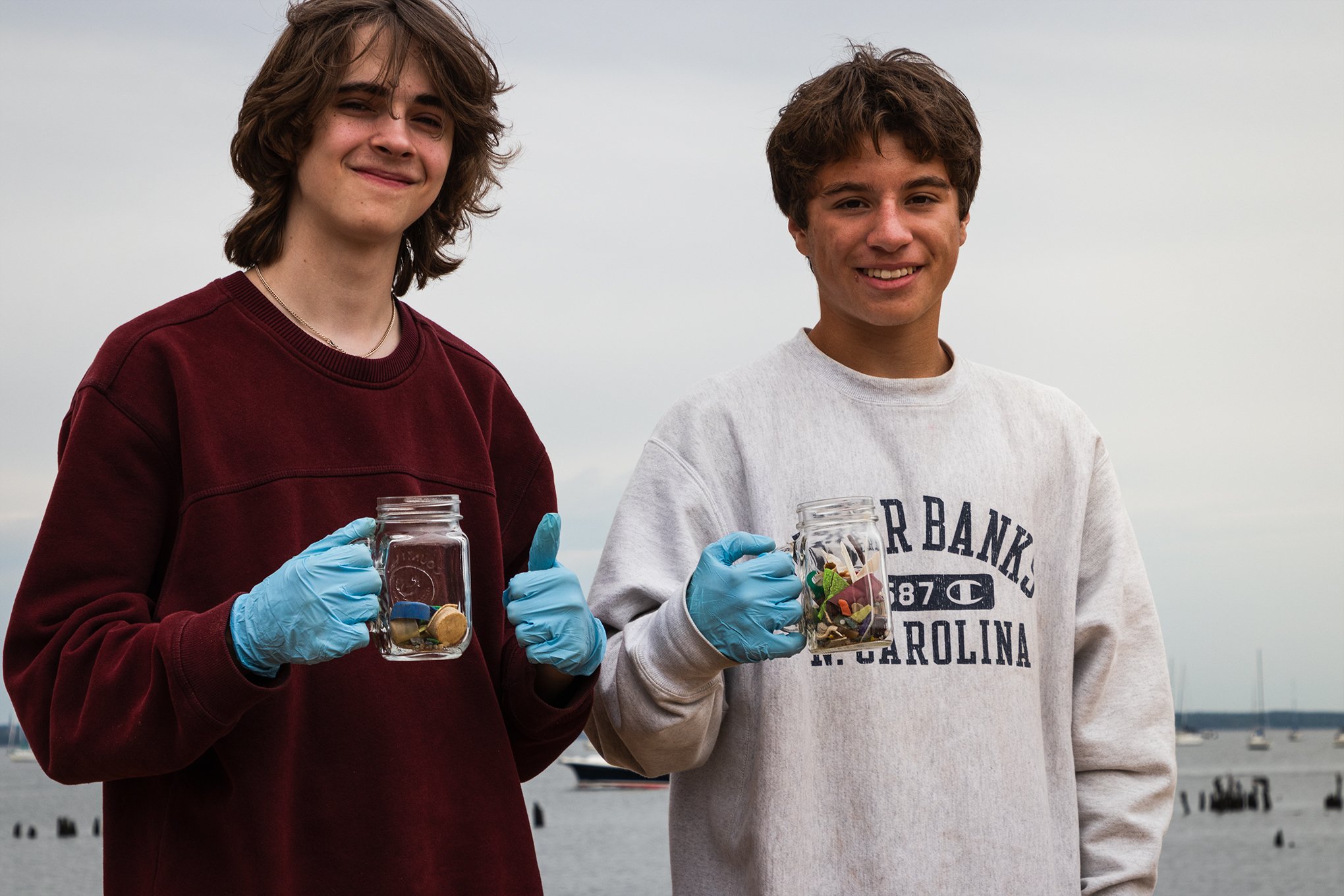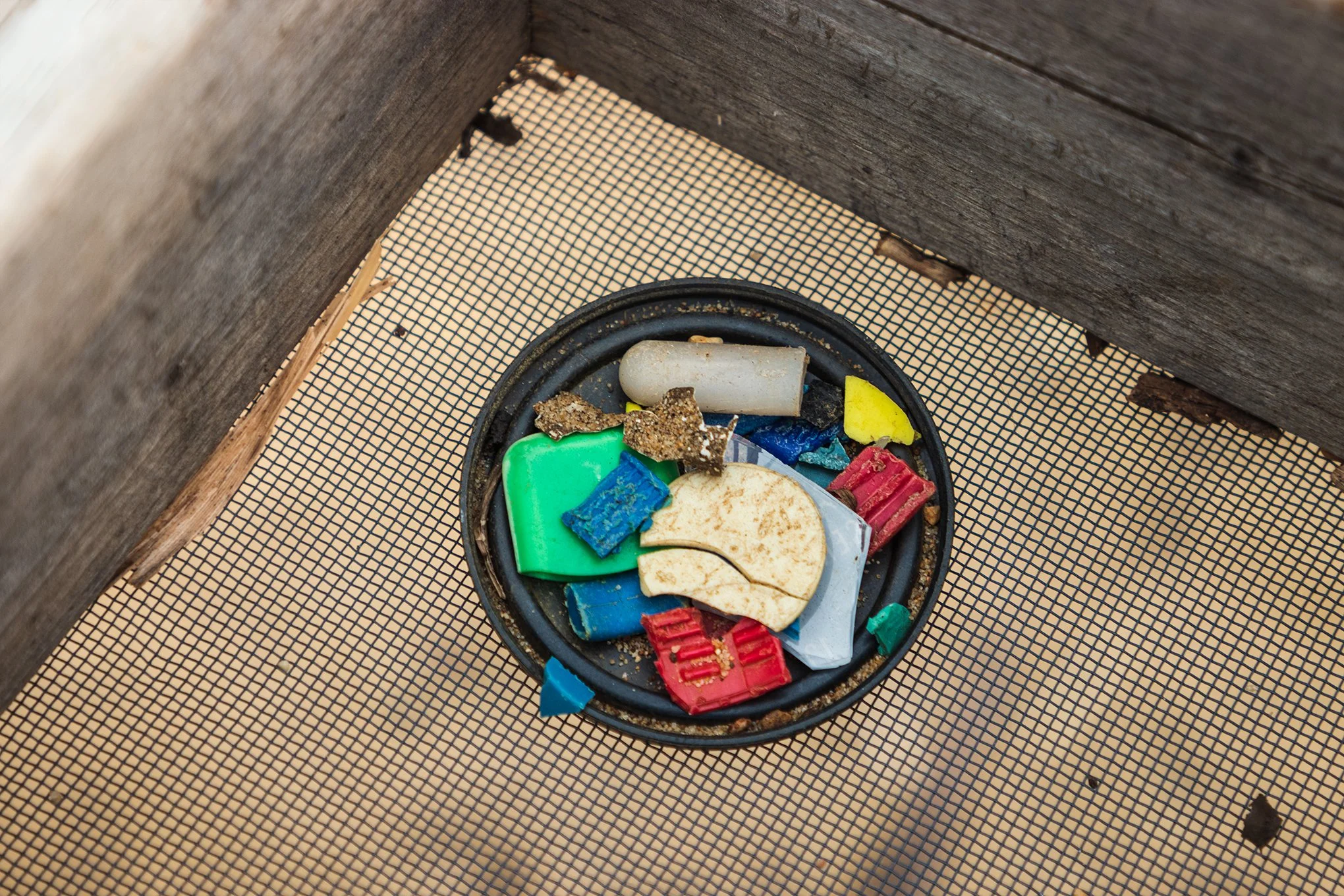Microplastics Monitoring Community Science
Starting in 2019, volunteers have sampled local beaches and waterways for microplastics in partnership with Save Coastal Wildlife and Save Barnegat Bay.
The goal of this pilot community science program is to take a closer look at how microplastics accumulate on local beaches along the Jersey Shore. This is achieved by collecting samples four times a year in as many different locations as possible. It is also an educational opportunity for participants to learn about microplastics and get involved with science. This program is open to all ages and backgrounds.
What are Microplastics?
Microplastics are typically described as plastic pieces 5 millimeters or less. They are incredibly diverse, varying in size, shape, and make-up. Some examples are synthetic fibers (polyester, lycra, and rayon), nurdles (in photo), and shedding from tires. Nurdles are little plastic pellets used to create plastic products.
But how do they get into the ocean and environment? Every plastic product will eventually turn into microplastics. Just like large rocks turn into sand, larger plastic items “break up” into microplastics that never disappear from the environment. They wind up being ingested by not only marine life, but also all of us. A study from The University of Newcastle found that we actually consume about a credit card worth of plastics each week.
Whether visible to the naked eye or only under a microscope, microplastics exist everywhere in the environment, from the sand and soil, to the fish we eat, to the air we breathe.
New Jersey Microplastic Map
Click on the map below to explore microplastic data collected through this program!
NOTE: We are currently experiencing some technical difficulties that is preventing access to the map. Apologies for any inconvenience. We hope it will be up again soon.
Interested in joining us?
Each year-long monitoring study entails four samples in one location of your choosing throughout the year (see exact date windows below). We request you try to make it out each season for data consistency, but it is not required. Explore the videos below to learn how to properly collect samples and participate in the study. Follow these steps to join!
Review the the Volunteer Waiver.
Fill out the information below under “Volunteer Sign Up”. You will be added to our mailing list for volunteers after hitting “Subscribe”.
Join our Google Classroom (optional but recommended).
Review the videos and documents under “Current Volunteers: Important Information” below.
Info for Current Volunteers
Please join our Google Classroom here after signing up. You will receive communication over email, so make sure to check your promotions or spam folders!
2023-2024 Sample Dates
Winter 2023/4: December 30, 2023 - January 15, 2024
Spring 2024: March 16, 2024 - March 31, 2024
Summer 2024: June 15, 2024 - June 30, 2024
Fall 2024: September 14, 2024 - September 29, 2024
Training Videos
Important Documents
Microplastics Sampling Procedures: (READ FIRST - NEW as of 12/2022) tools and directions about sampling.
Sample Locations: where to take samples.
Sampling Datasheet: (DURING SAMPLING) to collect data during sampling.
Photo Submission Sheet: (AFTER SAMPLING) to submit photos of microplastics found. Please print scaled to 100% to preserve integrity of the ruler. You can also use any light background to submit a photo if needed.
All photos by Gavin Shwahla @gavinwildvisuals
